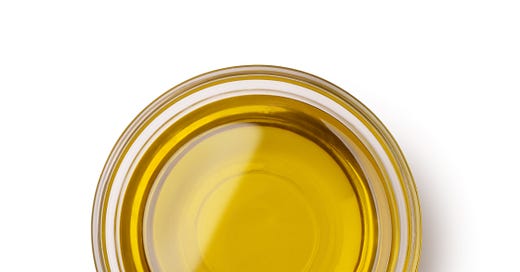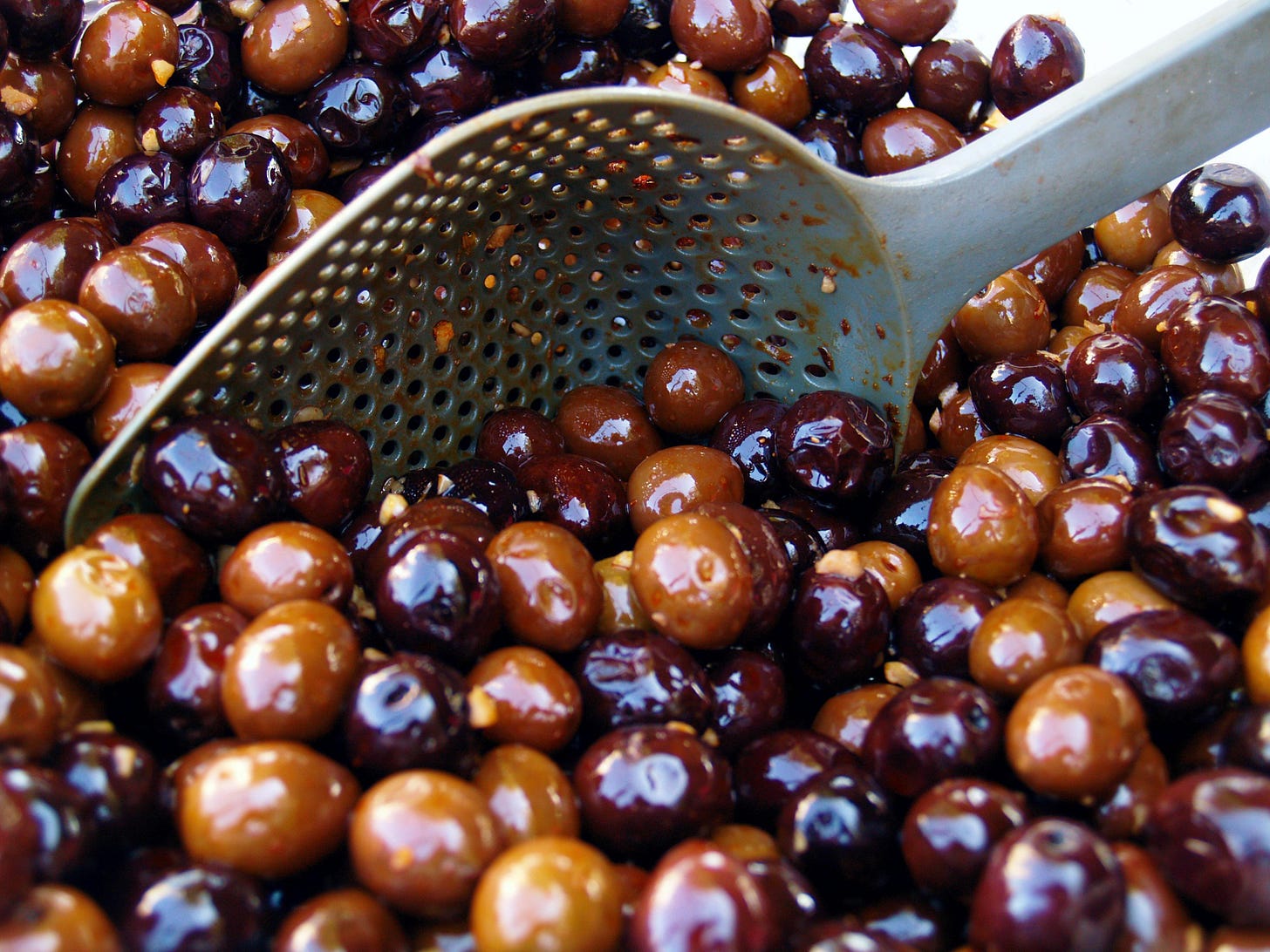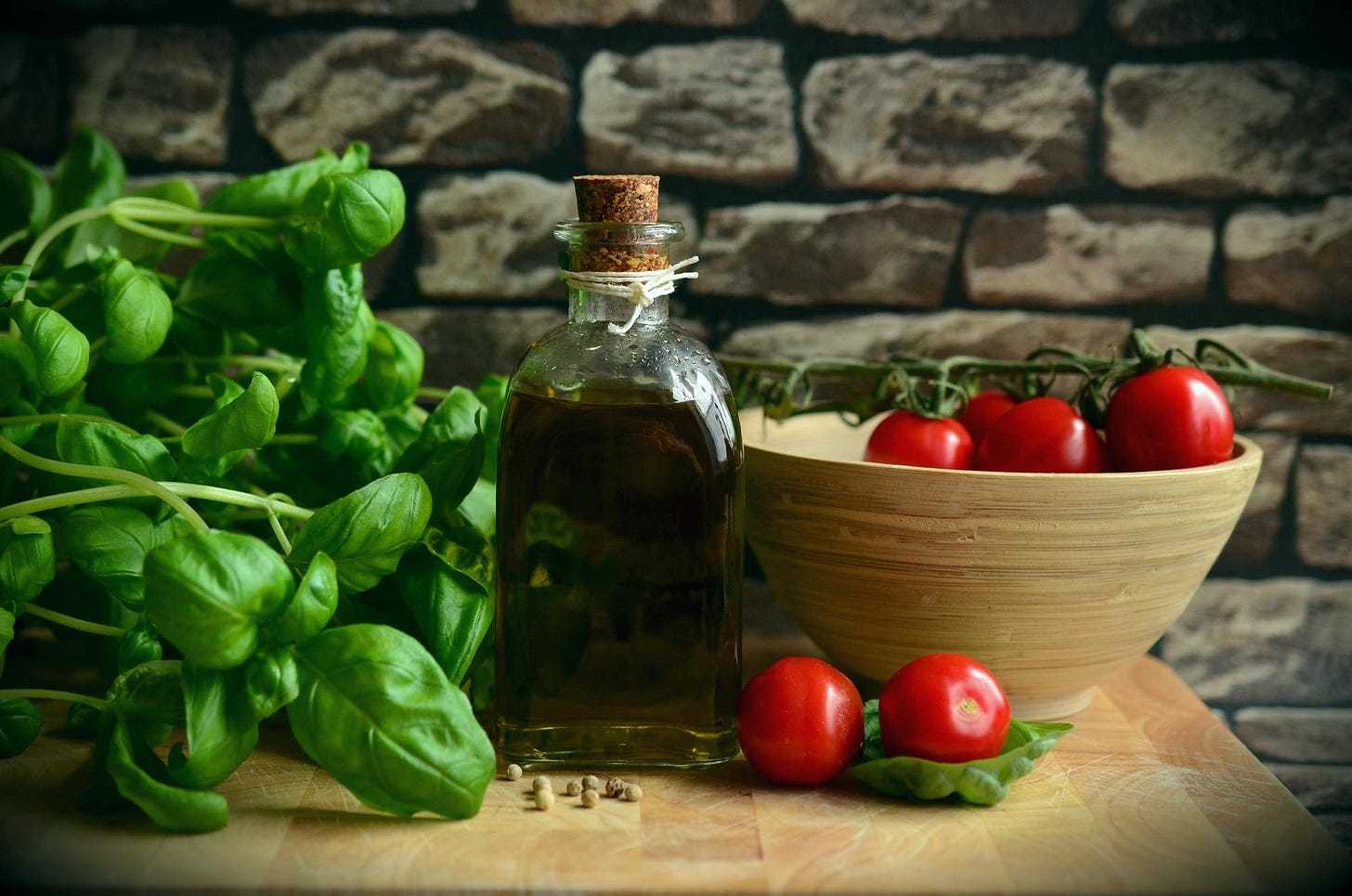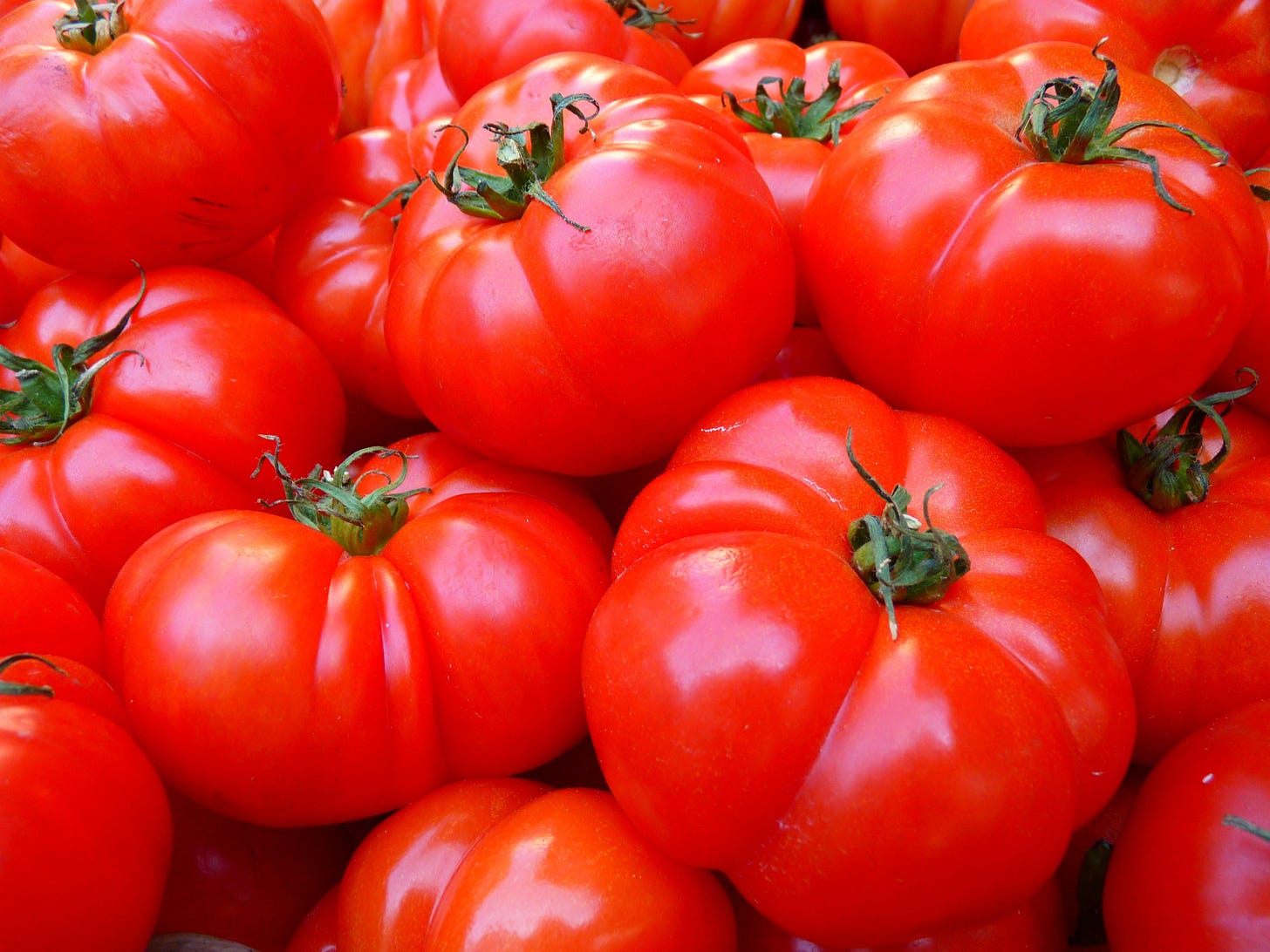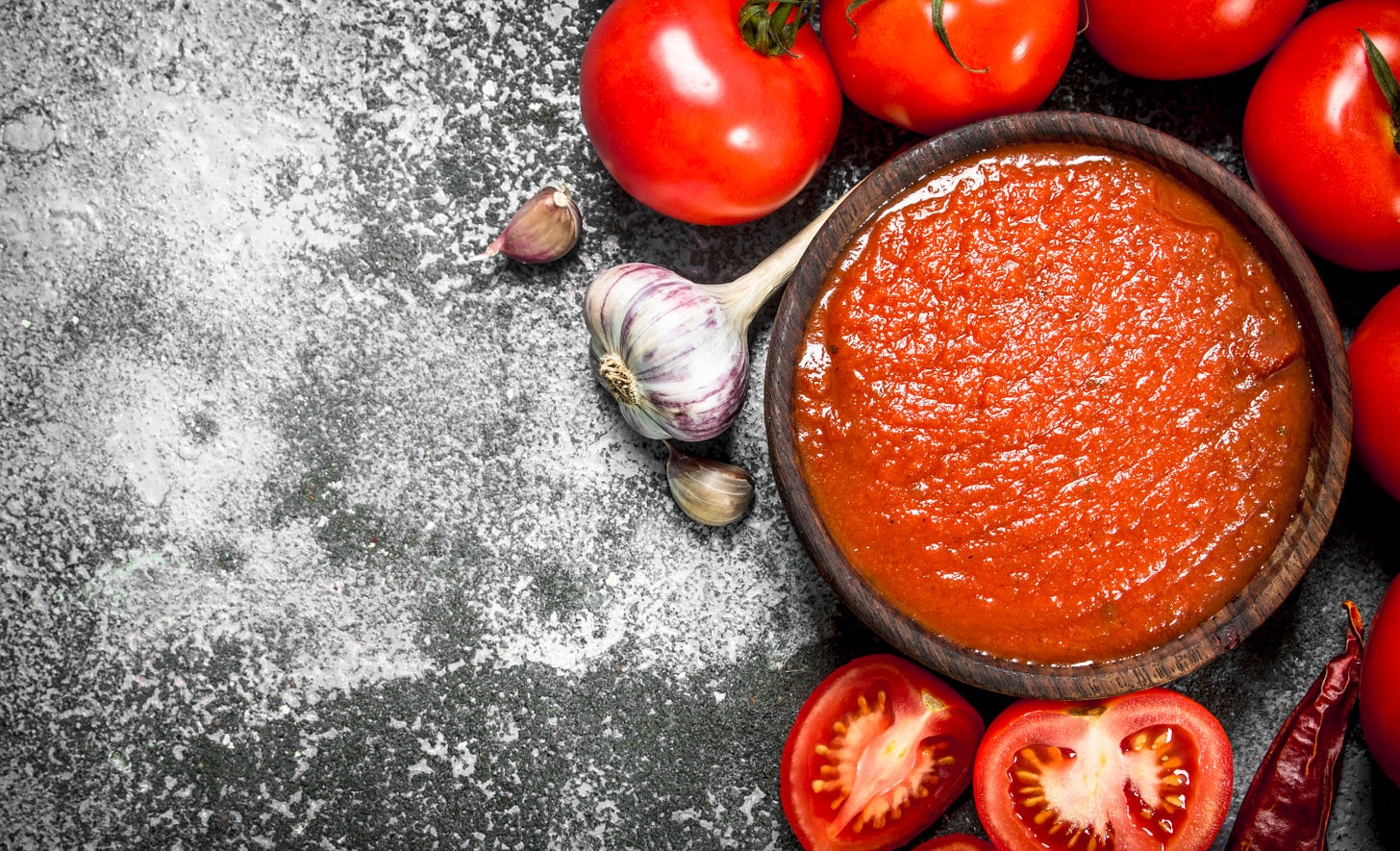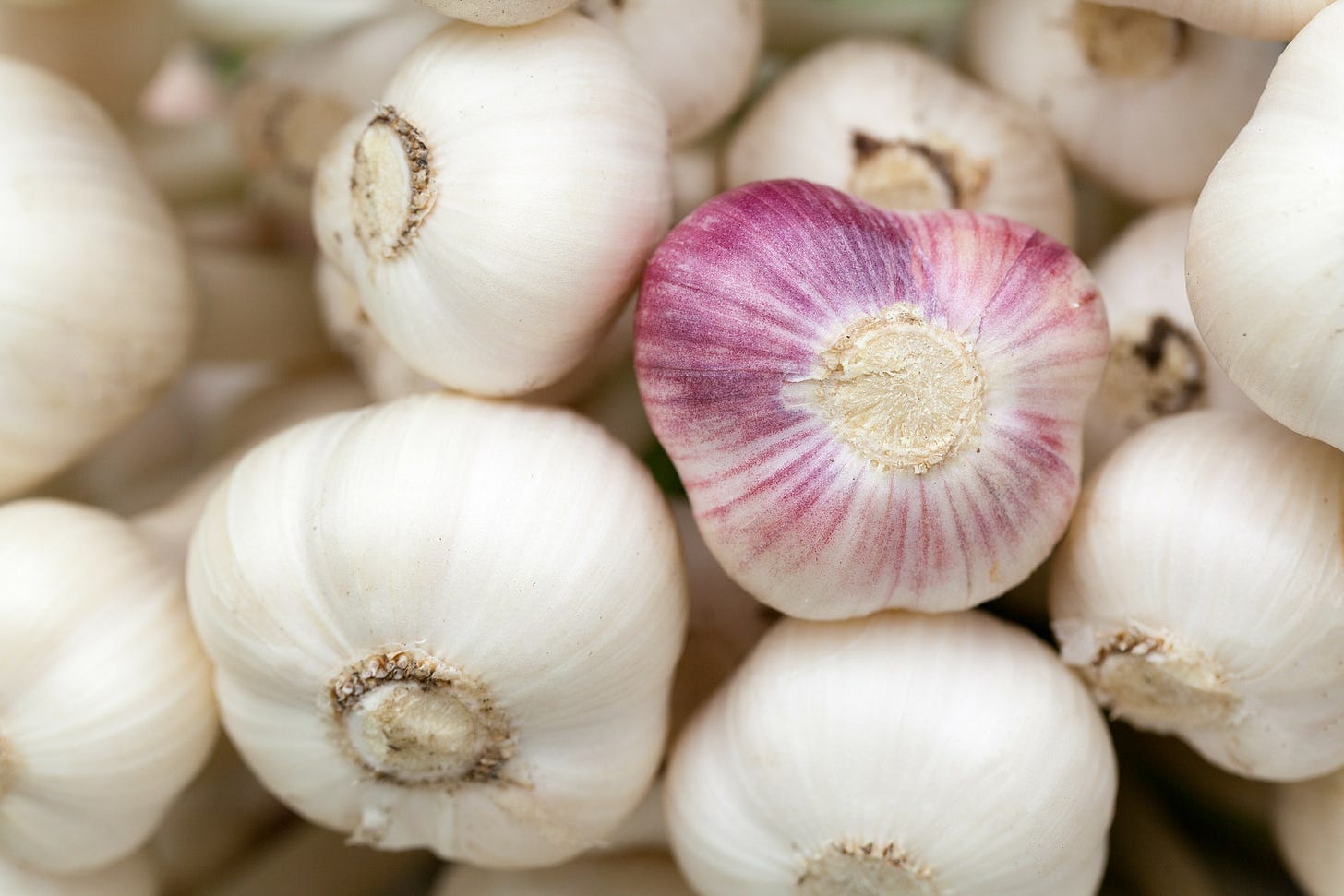Mediterranean Diet - Powerful Synergistic Health effects of Olive Oil, Tomatoes and Garlic
Deep dive into how the traditional nutrient dense partnership of Olive Oil, Tomatoes and Garlic radically benefits our health. And if you don't like tomatoes and/or, garlic just go with the Olive Oil.
Olive Oil - where did it come from?
Olive oil use likely began in the Mediterranean region around 6000 to 4500 BCE. The ancient Egyptians were among the first to use olive oil not only as food but also for religious rituals, cosmetics, and medicine. Olive oil production became more refined during the Bronze Age, and by the time of the Minoans and Mycenaeans (circa 1500 BCE), it was a significant part of their economy and culture.
Later, in Greece, olive oil was a staple in the diet and used as a prize in athletic competitions. The Romans expanded olive cultivation further ensuring olives became a cornerstone of Mediterranean agriculture in regions like regions like Spain, Italy, and Greece.
Olive oil began to be widely recognised for its health benefits in modern times beyond the Mediterranean countries in part due to additional research. This recognition was largely spurred by the research into the Mediterranean diet, which highlighted the low rates of heart disease among populations in Mediterranean countries compared to those in the United States and Northern Europe. Research during the 1950s and 1960s suggested that the monounsaturated fats in olive oil played a key role in promoting heart health. The 1980s and 1990s researchers discovered that olive oil is rich in polyphenols that can have antioxidants and anti-inflammatory properties. Lets dive a little deeper…
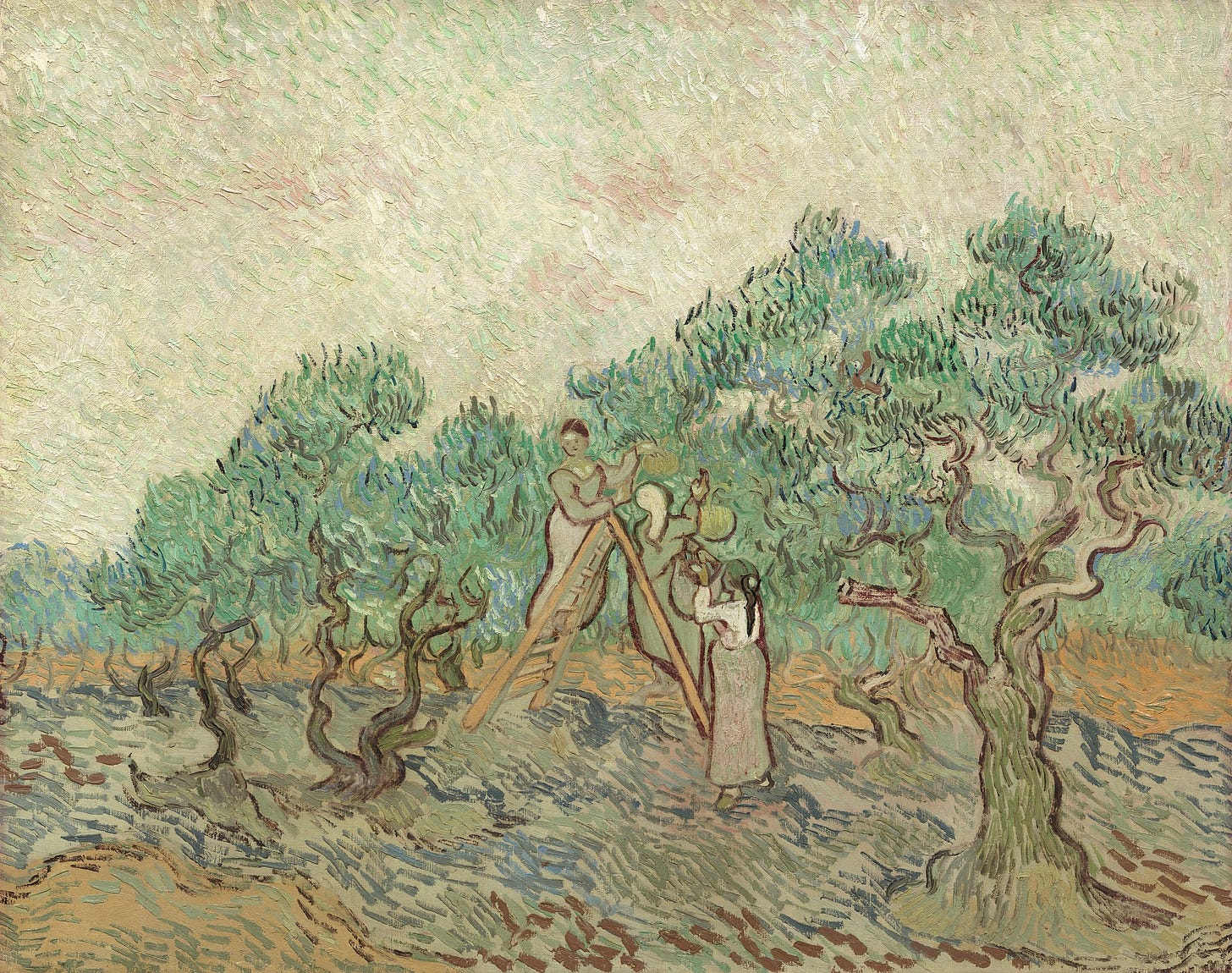
Nutrients in Olive Oil
These nutrients contribute significantly to human health - with an emphasis on cardiovascular health.
Monounsaturated Fatty Acids (MUFAs): The primary fat in olive oil is oleic acid, a monounsaturated fat. MUFAs are beneficial because they help reduce “bad” LDL cholesterol levels while maintaining “good” HDL cholesterol levels. Higher levels of LDL cholesterol have been implicated in the development of atherosclerosis and the buildup of plaque in arteries, which can lead to heart disease.
Polyphenols: Olive oil is rich in polyphenols, which are powerful antioxidants. These compounds can help reduce oxidative stress and inflammation in the body, both of which are linked to heart disease. Note - Oxidative stress is when harmful molecules called free radicals (unstable molecules) damage cells, potentially leading to aging and disease. Key polyphenols in olive oil include hydroxytyrosol and oleuropein. They help improve the function of the endothelium (the lining of blood vessels), reducing the risk of atherosclerosis.
Vitamin E: This vitamin is a potent antioxidant that helps protect cells from damage. It can help prevent LDL cholesterol oxidation. Note that Vitamin E is also found in many other foods within the Mediterranean Diet like Nuts, Seeds, Avocado, Spinach and red peepers. A standard serving of olive oil, which is about one tablespoon (approximately 14 grams), contains around 1.9 milligrams of vitamin E. More on this in next article when we look at Nuts and seeds in the Mediterranean Diet.
Squalene: This is another antioxidant found in olive oil. It contributes to the overall antioxidant activity and supports cardiovascular health by protecting cells from oxidative damage. We’ll look at this interesting nutrient more latter as we dive deeper into minimising cholesterol levels naturally. (non-pharmacologically)
Omega-3 and Omega-6 Fatty Acids: Although present in smaller amounts compared to MUFAs, these polyunsaturated fats are essential for health. They play a role in maintaining heart health by reducing triglyceride levels and improving blood vessel function. Within the diet an optimal ratio for these is about 1:1. Note that in most “western based diets” this ratio can be 1 Omega-3 to 20 Omega-6, which in turn can be pro-inflammatory.
Phytosterols: These plant compounds help block the absorption of cholesterol in the intestines, which can lower overall blood cholesterol levels.
Oleocanthal: This compound has anti-inflammatory properties similar to those of ibuprofen. Chronic inflammation is a known risk factor for many diseases, including heart disease.
There are of course more, but this is a start to give an overview.
NERD ALERT
How ingredients in Olive Oil reduce Cholesterol levels and promote cardiovascular health
Cholesterol has its own biosynthetic pathway, and fats like monounsaturated fats don't directly convert into cholesterol. However they do have an effect. Let's clarify how this works:
Cholesterol Synthesis in the Liver: Cholesterol is synthesised in the liver from acetyl-CoA through a series of enzymatic reactions. The key enzyme in this process is HMG-CoA reductase which is the rate-limiting enzyme for cholesterol synthesis and is regulated via a negative feedback mechanism mediated by sterols and non-sterol metabolites. This pathway does not directly use dietary fats as raw materials.
Very broadly and this is complex, MUFAs affect how the liver manages cholesterol. MUFAs can influence the liver's regulation of cholesterol synthesis. They help down regulate the activity of HMG-CoA reductase mentioned above. This means the liver produces less cholesterol overall. MUFAs also promote the expression of LDL receptors on liver cells, thus increasing the number of receptors, which helps remove LDL cholesterol from the bloodstream more efficiently. These receptors grab LDL cholesterol from the blood and break it down. With more receptors, more LDL is removed from your bloodstream, lowering its levels.
Saturated fats, on the other hand, tend to have the opposite effect. They can increase the activity of HMG-CoA reductase, leading the liver to produce more cholesterol, including LDL cholesterol. Saturated fats can also decrease the expression of LDL receptors on liver cells, resulting in less LDL cholesterol being sequestered from the blood.
Cholesterol Efflux: MUFAs can enhance the process of reverse cholesterol transport. This is where HDL particles collect cholesterol from the arteries and transport it back to the liver for excretion or recycling. This helps maintain or increase HDL cholesterol levels, which is beneficial because HDL helps clear cholesterol from the bloodstream.
Oxidation Prevention: Oleic acid and other MUFAs are less prone to oxidation compared to polyunsaturated fats, which are prevalent in other cheap vegetable oils.
Anti-inflammatory Effects: MUFAs have anti-inflammatory properties that help reduce chronic inflammation, a risk factor for cardiovascular disease. This is partly mediated through the production of anti-inflammatory molecules derived from oleic acid.
Modulation of Gene Expression: MUFAs can influence the expression of genes involved in lipid metabolism, inflammation, and oxidative stress. For instance, they can upregulate genes that promote cholesterol efflux and downregulate genes that lead to cholesterol synthesis and inflammation.
Note that atherosclerosis formation is a theory, however…
So in theory we have - High LDL cholesterol leads to oxidised LDL cholesterol which leads to plaque formation and leads to atherosclerosis leading to potential cardiovascular disease. And the latest consensus underscores the multifaceted nature of atherosclerosis, involving oxidative stress, inflammation, and cellular dysfunction. These insights pave the way for developing targeted therapies that could more effectively manage and prevent cardiovascular disease by addressing these underlying mechanisms. So how does olive oil play into that? So rather than wait for developing targeted therapies, can taking olive oil help now.
Olive oil can help mitigate the factors involved in atherosclerosis and cardiovascular disease through several mechanisms related to its key components:
Antioxidant Properties: Olive oil is rich in polyphenols, such as hydroxytyrosol and oleuropein, which have strong antioxidant effects. These antioxidants help neutralize free radicals, reducing oxidative stress and preventing the oxidation of LDL cholesterol. By preventing LDL oxidation, olive oil can help reduce the initiation and progression of atherosclerotic plaque formation See Pathophysiology, treatment and rehabilitation of atherosclerosis-related diseases in geriatric population, Yan Xu et al, 2024
Anti-inflammatory Effects: Both the monounsaturated fats (MUFAs) and polyphenols in olive oil have anti-inflammatory properties. Chronic inflammation is a major driver of atherosclerosis. By reducing inflammation, olive oil can help protect the arterial walls from damage and slow the progression of plaque buildup
Improvement of Endothelial Function: The polyphenols in olive oil enhance endothelial function, which is crucial for maintaining healthy blood vessels. Improved endothelial function helps maintain the elasticity of arteries and prevents the early stages of atherosclerosis
Reduction of LDL Cholesterol Levels: Consuming olive oil helps reduce LDL cholesterol levels while maintaining or increasing HDL cholesterol levels. This balance is important for preventing cholesterol from accumulating in the arterial walls. The increased number of LDL receptors promoted by MUFAs helps clear LDL from the bloodstream more efficiently
Key polyphenols found in olive oil - they work together and have synergistic effects!
Key polyphenols found in olive oil, along with a brief description of their effects and how they might contribute to reducing atherosclerosis:
Hydroxytyrosol: One of the most powerful antioxidants in olive oil. It helps reduce oxidative stress by neutralizing free radicals, thereby preventing the oxidation of LDL cholesterol. This reduces the formation of atherosclerotic plaques.
Oleuropein: This compound has strong antioxidant and anti-inflammatory properties. It protects the endothelium and reduces inflammation in the arterial walls, helping to prevent the initiation and progression of atherosclerosis
Tyrosol: Similar to hydroxytyrosol, tyrosol is an antioxidant that helps protect cells from oxidative damage. It also has anti-inflammatory effects, contributing to the overall cardiovascular benefits of olive oil
Oleocanthal: Known for its anti-inflammatory effects similar to ibuprofen, oleocanthal reduces inflammation in the arteries, which can help prevent the development of atherosclerosis
Luteolin: This polyphenol has antioxidant and anti-inflammatory properties.
Apigenin: Another polyphenol with strong antioxidant properties.
Quercetin: Known for its potent antioxidant and anti-inflammatory effects
Which form of Olive Oil is best?
Which version of olive oil, i.e. Olive oil comes in versions like cold-pressed and extra-virgin olive oil, and first-pressed, and quite strong flavours, which of those has the greatest concentration and diversity of these polyphenols?
First pressed, Cold Pressed, Extra-virgin olive oil (EVOO) has the greatest concentration and diversity of polyphenols. Here’s why:
Minimal Processing: Extra-virgin olive oil is produced through cold pressing, which involves extracting the oil from olives without the use of heat or chemicals. This method preserves the natural polyphenols, antioxidants, and other beneficial compounds found in olives.
First-Pressing: EVOO is typically the first pressing of the olives, which means it contains the highest quality and concentration of polyphenols. The first pressing extracts the most potent and nutritious oil, rich in hydroxytyrosol, oleuropein, and other polyphenols
Stronger Flavors: The robust and sometimes peppery flavor of EVOO is an indicator of its high polyphenol content. These compounds contribute to the oil's bitterness and pungency, which are desirable qualities in high-quality olive oil.
A match made in heaven - Tomatoes, Olive oil and Garlic
The key word here is SYNERGY.
Another part of the Mediterranean diet is fruit and vegetables, including tomatoes. Now tomatoes have an ingredient called lycopene in high concentrations, more than any other vegetable. When you combine olive oil and tomatoes to make, like for instance, a tomato sauce for pasta, you have the combined benefits of ingredients in olive oil and some of the ingredients in tomatoes. It is known that lycopene can have a protective effect with regards to helping prevent oxidisation of LDL cholesterol. See Lycopene in the Prevention of Cardiovascular Diseases, Sylwia Przybylska et al, 2022
Key Benefits of Lycopene in Reducing Atherosclerosis:
Inhibition of LDL Oxidation: Lycopene helps prevent the oxidation of LDL cholesterol. Oxidized LDL is more likely to adhere to the arterial walls and form plaques. By inhibiting this oxidation, lycopene reduces the likelihood of plaque formation and progression of atherosclerosis
Anti-inflammatory Properties: Lycopene has strong anti-inflammatory effects. It reduces the production of pro-inflammatory cytokines and inhibits the expression of adhesion molecules that attract inflammatory cells to the arterial walls. This reduces inflammation in the arteries, which is crucial for preventing atherosclerosis See Lycopene and Vascular Health, Ioana Mozos et al, 2018
Cholesterol Regulation: Lycopene influences cholesterol metabolism by inhibiting HMG-CoA reductase, an enzyme involved in cholesterol synthesis, similar to how statins work. It also enhances the activity of LDL receptors, which helps clear LDL cholesterol from the bloodstream, further reducing its levels - whoa, this sounds familiar
Improvement in Lipid Profiles: Studies have shown that lycopene can lower total cholesterol, LDL cholesterol, and triglycerides while improving the LDL/HDL cholesterol ratio. This contributes to a healthier lipid profile and reduced risk of cardiovascular disease.
Benefits of Team work - Olive Oil and Lycopene
Combining lycopene with olive oil, such as in a tomato sauce, enhances the absorption of lycopene because it is a fat-soluble compound. As mentioned earlier, olive oil itself contains beneficial monounsaturated fats and polyphenols that support cardiovascular health by reducing LDL cholesterol levels and providing antioxidant protection. Together, the combination of olive oil and lycopene-rich tomatoes offers a powerful synergy that can significantly contribute to the potential minimisation of atherosclerosis and overall cardiovascular health.
Inhibition of Cytokine Production: Lycopene and the polyphenols in EVOO work together to reduce the production of pro-inflammatory cytokines and adhesion molecules, which are involved in the inflammatory response and the progression of atherosclerosis
Reduction of Inflammatory Markers: Both tomatoes and EVOO contain compounds that reduce inflammation. Lycopene in tomatoes and oleocanthal in EVOO both inhibit inflammatory pathways, such as the NF-kappa B pathway, which is involved in chronic inflammation. This dual action helps lower inflammation more effectively than either component alone
Antioxidant Defense: The combined antioxidant effects of lycopene and EVOO polyphenols help protect DNA and cellular components from oxidative damage, which can lead to cancer. Studies suggest that this combination may reduce the risk of certain cancers, particularly those related to oxidative stress and inflammation.
Carotenoids and Polyphenols: Cooking tomatoes with EVOO increases the bioavailability of carotenoids and polyphenols from the tomatoes. These compounds migrate into the oil during cooking, enhancing their absorption and bioactivity. This process boosts the antioxidant and anti-inflammatory properties of the combined ingredients
Protection Against Neurodegeneration: EVOO's polyphenols, particularly oleocanthal, have been linked to protective effects against neurodegenerative diseases like Alzheimer's. When combined with lycopene's antioxidant properties, this may enhance protection against cognitive decline by reducing oxidative stress and inflammation in the brain See Olive Oil Times
Improvement in Cognitive Function: Regular consumption of EVOO has been associated with better cognitive function, and its combination with tomatoes might enhance these effects through improved nutrient absorption and anti-inflammatory actions See Health Benefits of Extra Virgin Olive Oil
Skin health: The antioxidants in both tomatoes and EVOO help protect the skin from damage caused by UV radiation and environmental pollutants, reducing signs of aging and improving skin health. The improved absorption of carotenoids and polyphenols supports skin elasticity and hydration
Pro-Vitamin A: Beta-carotene, found in tomatoes, is converted into vitamin A in the body, which is essential for vision, skin health, and immune function. The presence of fat from EVOO increases the absorption of beta-carotene from tomatoes.
Gut Health: The combination of dietary fibre from tomatoes and polyphenols from EVOO promotes a healthy gut microbiome which is essential for overall health, including immune function and mental well-being. The fiber acts as a prebiotic, feeding beneficial gut bacteria, while the polyphenols exert anti-inflammatory effects, further supporting gut health. The fibre in tomatoes, especially in the skin, acts as a prebiotic, feeding beneficial bacteria in the gut. The combination of polyphenols from EVOO and fibres from tomatoes promotes a diversity of gut microbiota. The fiber in tomatoes acts as a substrate for bacterial fermentation in the gut, producing short-chain fatty acids (SCFAs) like butyrate. SCFAs support gut health by nourishing colon cells and maintaining the integrity of the gut lining. When combined with the polyphenols from EVOO, which are also metabolised into bioactive compounds, this synergy further promotes a healthy gut environment by enhancing the production of SCFAs and other beneficial metabolites.
Simple Roasted Tomato Sauce Recipe
I have often made this and although it is simple, it is so so so delicious.
Ingredients:
2 pounds (about 900 grams) of fresh tomatoes (preferably ripe and juicy)
1/4 cup (60 ml) of extra virgin olive oil
3 cloves of garlic, finely chopped
Salt to taste and a little brown sugar
Instructions:
Preheat the Oven:
Preheat your oven to 375°F (190°C).
Prepare the Tomatoes:
Wash the tomatoes. Carefully cut a cone type shape into the top of the tomato so as the remove the green part that connects to the stem. This leaves a crater in the top of the tomato where you can put a little sugar so as the remove some of the acidity inherent in tomatoes.
Place the tomatoes into a baking tray or glass pyrex dish (this way the tomatoes can be frozen after cooking and stored for later use). Sprinkle a little salt.
Roast the Tomatoes:
Roast the tomatoes in the preheated oven for about 30-45 minutes, or until they are soft and slightly caramelized.
Cook the Garlic:
In a large pan, gently heat the extra virgin olive oil over medium heat while adding the garlic at the same time. Sauté very slowly until it is fragrant and slightly golden.
Combine and Simmer:
Add the roasted tomatoes (along with any juices from the baking sheet) to the pan with the garlic and olive oil.
Use a spoon or spatula to gently break down the tomatoes.
Season with a pinch of salt to taste.
Simmer the mixture over medium-low heat, stirring occasionally, for about 10-15 minutes, or until the sauce reaches your desired consistency.
Adjust Seasoning:
Taste the sauce and add more salt if necessary.
You can also add a pinch of sugar if the sauce tastes too acidic.
Serve:
Use the sauce immediately with your favorite pasta, or store it in an airtight container in the refrigerator for up to a week.
This method allows the tomatoes to develop a rich, concentrated flavor from roasting while keeping the process simple. Enjoy!
Benefits of Using Garlic Instead of Onions:
Nutritional & Flavour Benefits:
Antioxidants: Garlic contains compounds like allicin, which have potent antioxidant properties. These antioxidants help protect the body from oxidative stress and support overall health.
Anti-inflammatory Properties: Garlic is known for its strong anti-inflammatory effects, which can help reduce inflammation in the body and support immune function.
Antibacterial and Antiviral: Garlic has natural antibacterial and antiviral properties, making it beneficial for boosting the immune system and fighting off infections.
Intense Flavour profile: Garlic provides a more intense and distinct flavor compared to onions. This can add a robust and aromatic dimension to dishes.
Best Form of Sugar to Use:
Brown Sugar: Using brown sugar in tomato sauce can enhance the flavour profile by adding a subtle richness and complexity due to the molasses content. It can balance the acidity of the tomatoes without overpowering the dish.
In summary, garlic offers specific health benefits and a more intense flavour compared to onions. Brown sugar is a good choice for sweetening tomato sauce, providing a richer flavour and additional nutrients.
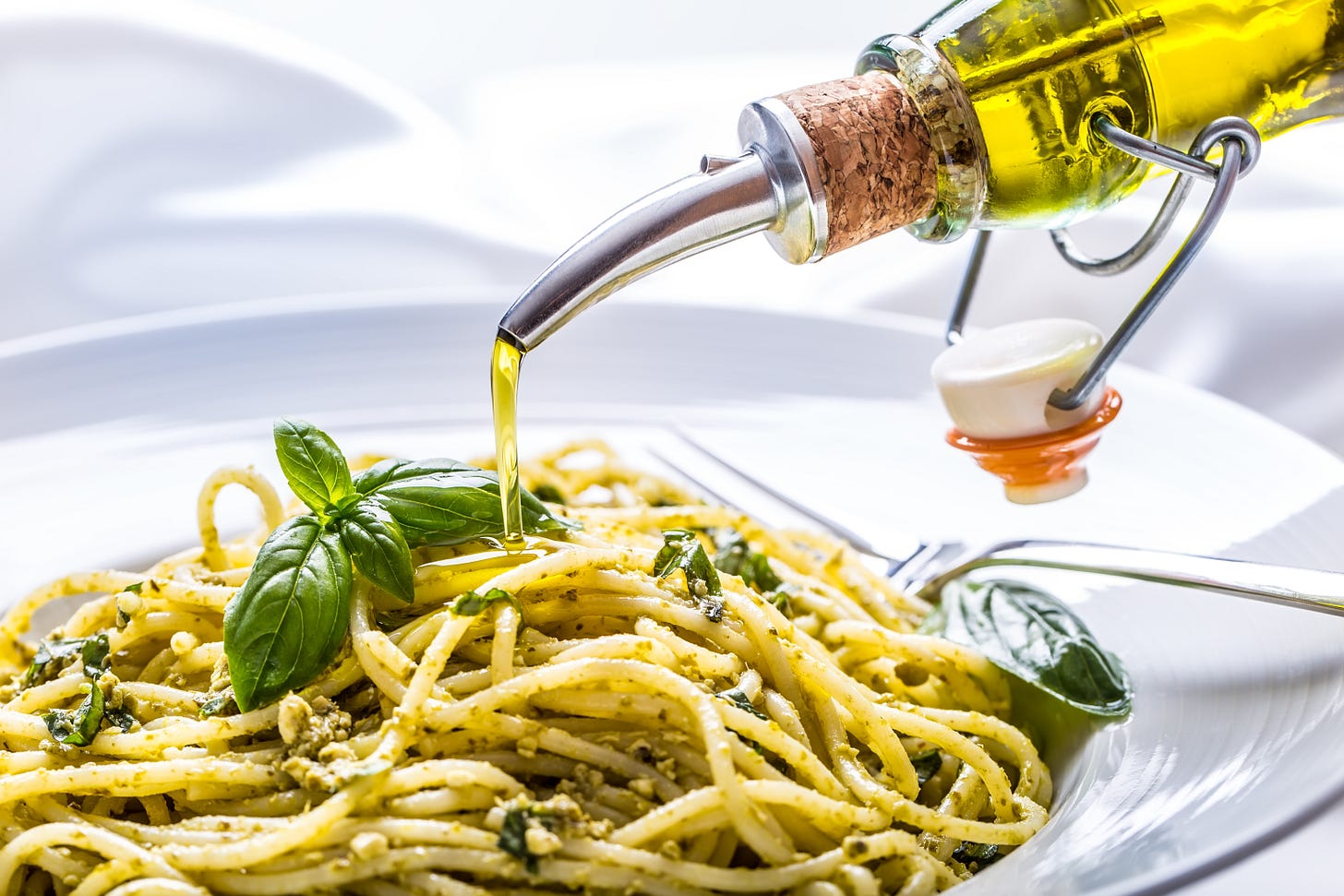
Next we will look at Nuts and Seeds as part of the Mediterranean Diet.

